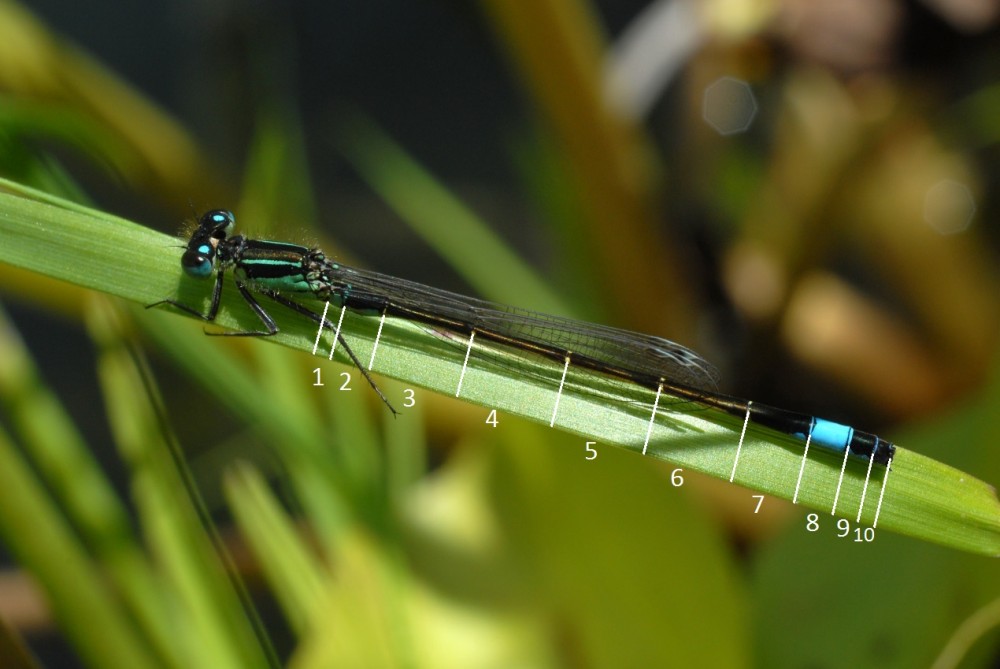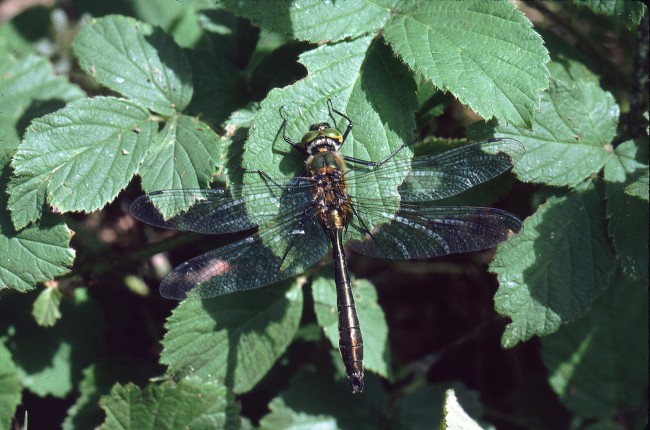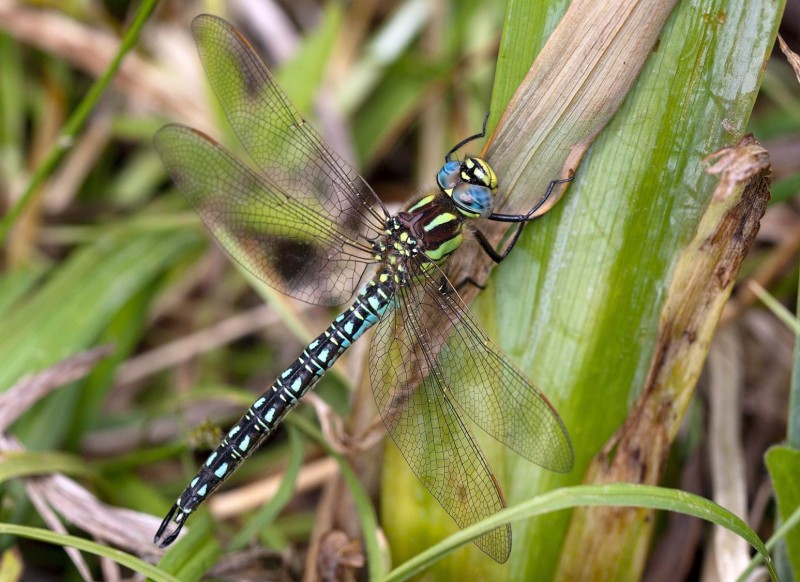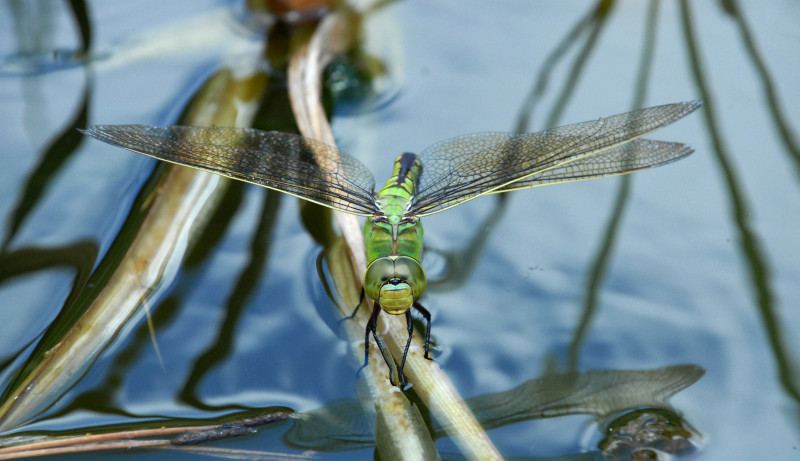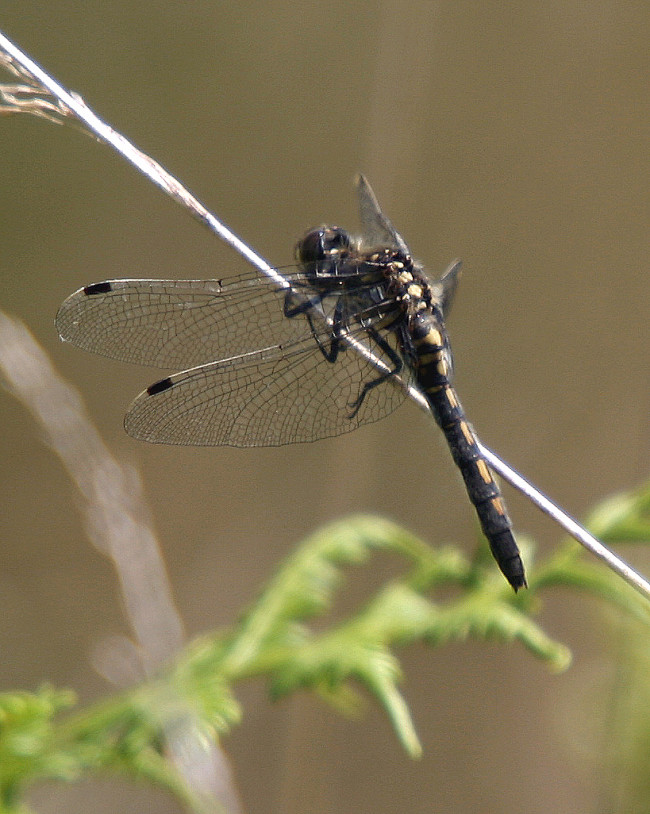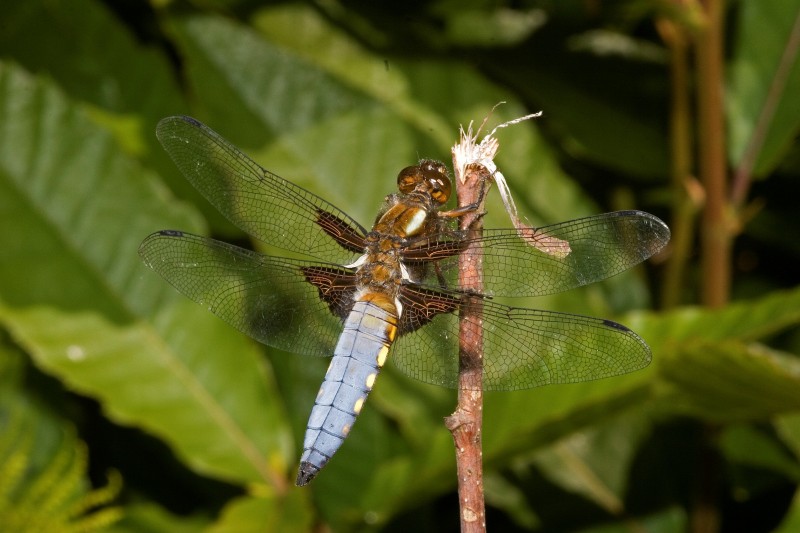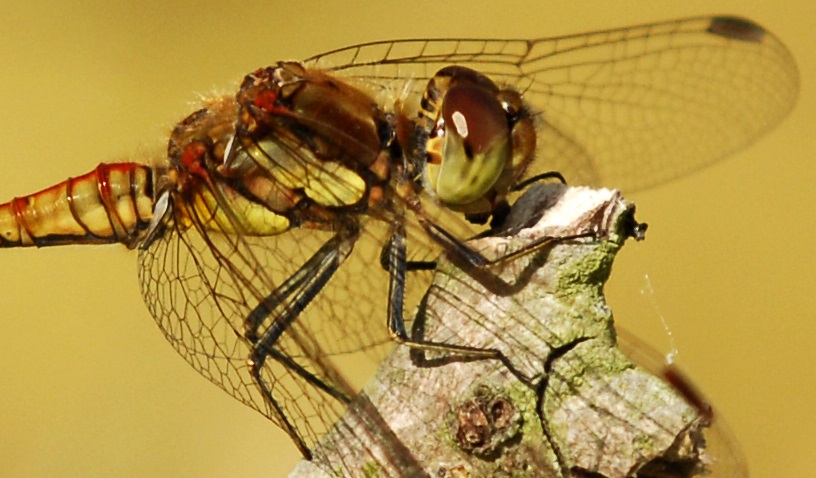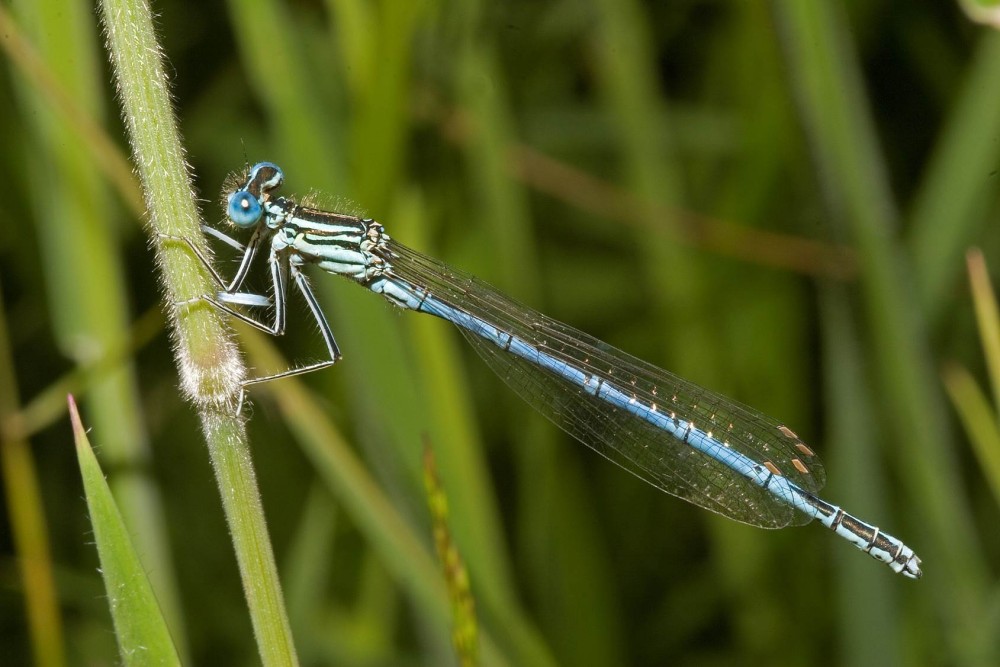Once you have established whether you are looking at a dragonfly or damselfly certain anatomical features need to be observed to identify the species. These are introduced below along with the terms used to describe them. Ideally your identification will be based upon a number of these features. Colour is frequently used to assist identification, but ideally should not be used as the sole diagnostic feature as colour can change considerably with age and a number of environmental factors such as temperature.
Head
Eyes
Frons
Eye colour can assist identification as well as the degree of contact between the eyes. The Golden-ringed dragonfly (above left) has striking green eyes clearly joining at a point. The Southern Hawker (above right) has a far broader contact point between the eyes.
The frons is the face area where colour and markings can aid identification. Above is a male White-faced Darter with a diagnostic white frons.
Thorax
Abdomen
Segments
Photograph © M. Randall
10 segments are present numbered from the end nearest the thorax. When looking at a specimen it is easier to count the segments backwards starting at the end of the abdomen. Click on the Blue-tailed Damselfly above to get a closer view. Patterns and colour on the whole abdomen or on specific numbered segments may be diagnostic.









